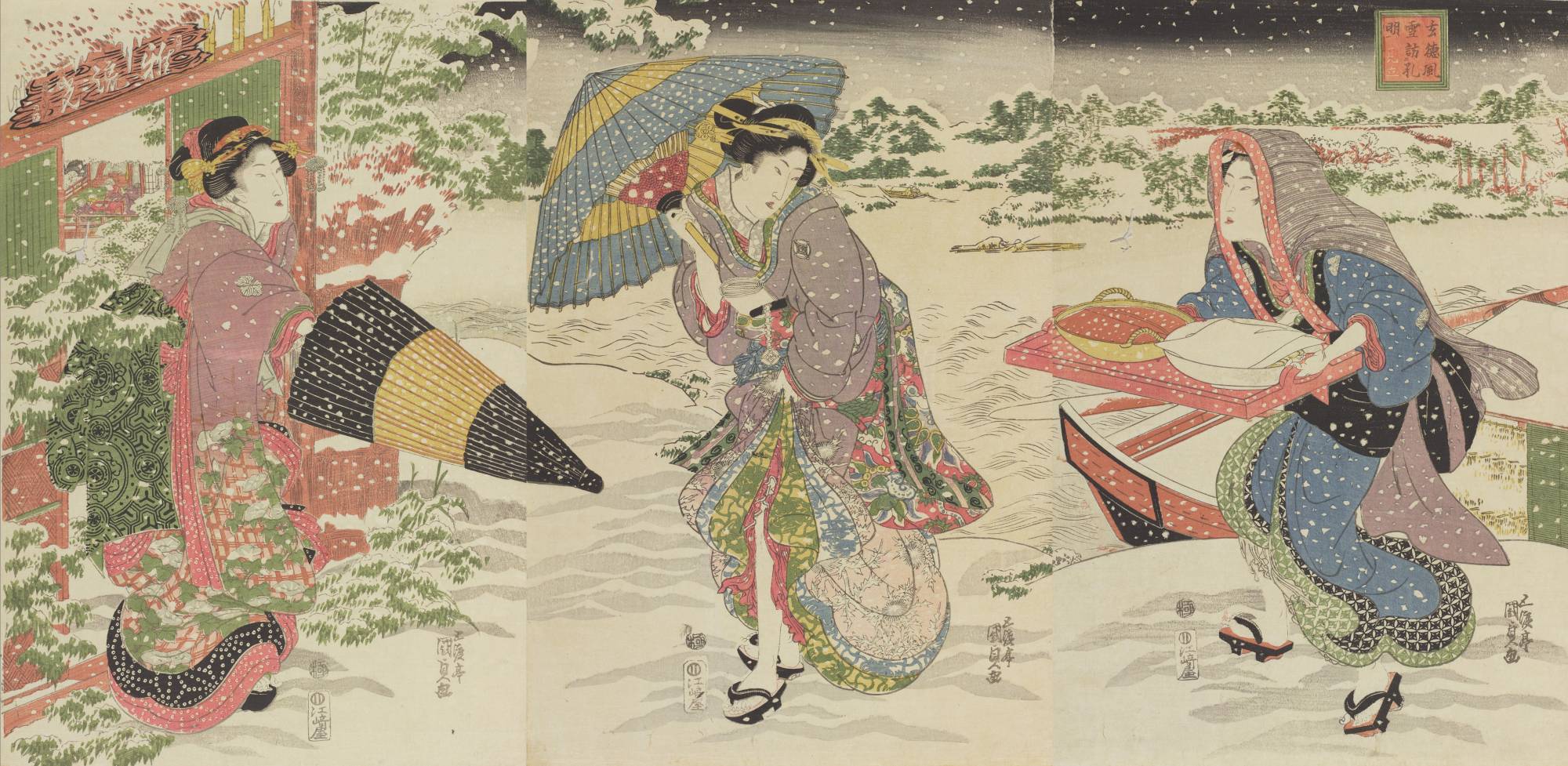Few art forms are as quintessentially Japanese as the woodblock print. Yet its roots are not purely indigenous, and its development in the last decades of the 17th century owes much to China. “The diversity of themes, the use of vivid colors to enhance expressivity, to say nothing of the technology itself — all these elements bear the hallmark to some extent of Chinese culture,” says Michi Akagi, curator of the Ota Memorial Museum of Art’s “China in Ukiyoe,” a new show that runs through Jan. 29.
Chinese artisans started experimenting with woodblock color printing as early as the Southern Song Dynasty (1127-1279). It was, however, a rudimentary and laborious process: Each hue normally required the carving of a separate block, so the first prints were two-toned and rather bland. Later on, Japanese craftsmen adopted the same technique — one color, one block — but they developed their own approach — the “kento” registration mark — to ensure that each color would align exactly with the others without gaps in between. As the technology matured and the market for books and ukiyo-e expanded, Japanese publishers grew bolder. They began releasing designs that spread over several sheets and employed numerous colors, up to 20 in some cases. Another technique with Chinese roots is embossing, otherwise known as gauffrage, which adds a three-dimensional texture to prints.
Methods aside, China also acted as a conduit for Western art and ideas, especially after the 1630s, when Japanese citizens were prevented from traveling abroad and most foreigners were barred from entering the country. A good example is perspective drawing, which Jesuit missionaries introduced to the Middle Kingdom in the late 16th century. Before long, Chinese print shops were experimenting with it, notably in Suzhou, one of the country’s most dynamic commercial and artistic hubs. “It was most likely through the import of these prints,” Akagi explains, “that Japan learned about Western perspective.”

















With your current subscription plan you can comment on stories. However, before writing your first comment, please create a display name in the Profile section of your subscriber account page.